
The 5 Most Beautiful Rice Terraces In Vietnam
The stairways to the sky and their creators, famous throughout Vietnam, especially in the northern regions. Their beauty is so striking that these famous terraced rice fields are recognized by the state as a national monument, hailed as masterpieces by international media, and of course, dreamed of when one wishes to discover Vietnam.
Kept and passed down by minority ethnic groups, these agricultural works of art are must-see sights in northern Vietnam. Not only for their beauty but also for the moments of exchange they create. Let’s explore from north to south to discover the region’s most beautiful landscapes.
The Most Beautiful Rice Terraces in Vietnam
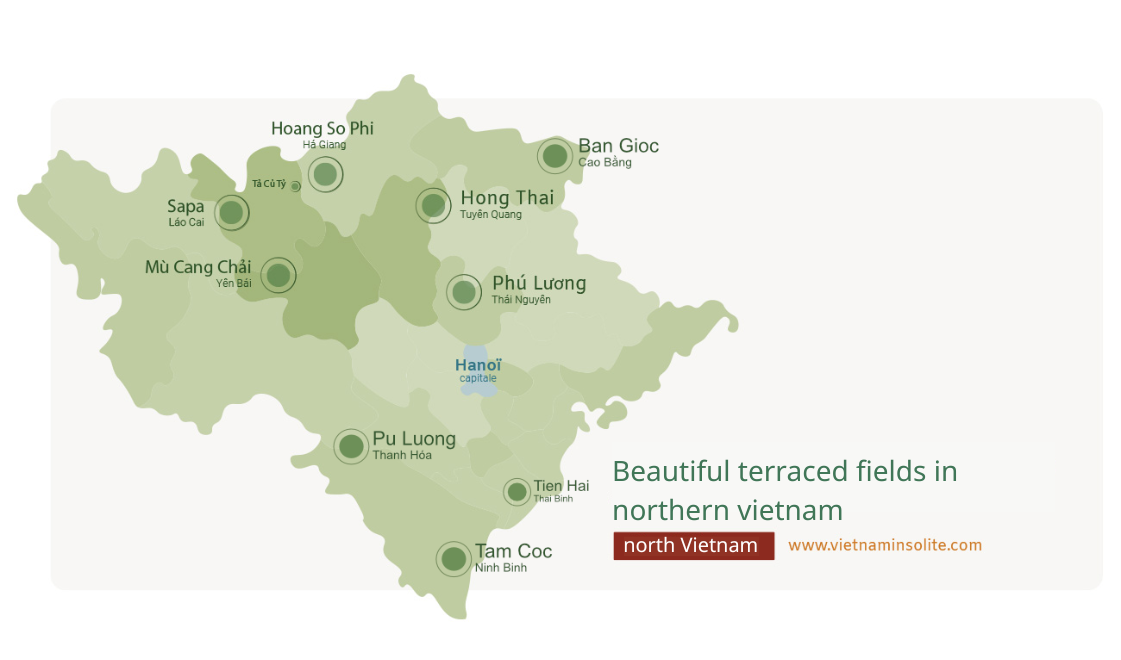
- The Rice Terraces of Mu Cang Chai
The first in Vietnam, second on the world stage*. Mu Cang Chai boasts the largest terraced rice field system in the country. It's simple here; the rice paddies blend into every mountainside. Moreover, the planting times differ across the region, offering an astonishing play of colors. You've undoubtedly seen the Ma Xoi (Raspberry) Hill if you've searched for images of Vietnam, one of the most beloved and certainly most photographed in the country. P.S.: If you have a taste for adventure, paragliding is possible.
*Because we're fair play, Banaue in the Philippines holds first place, an exceptional site.
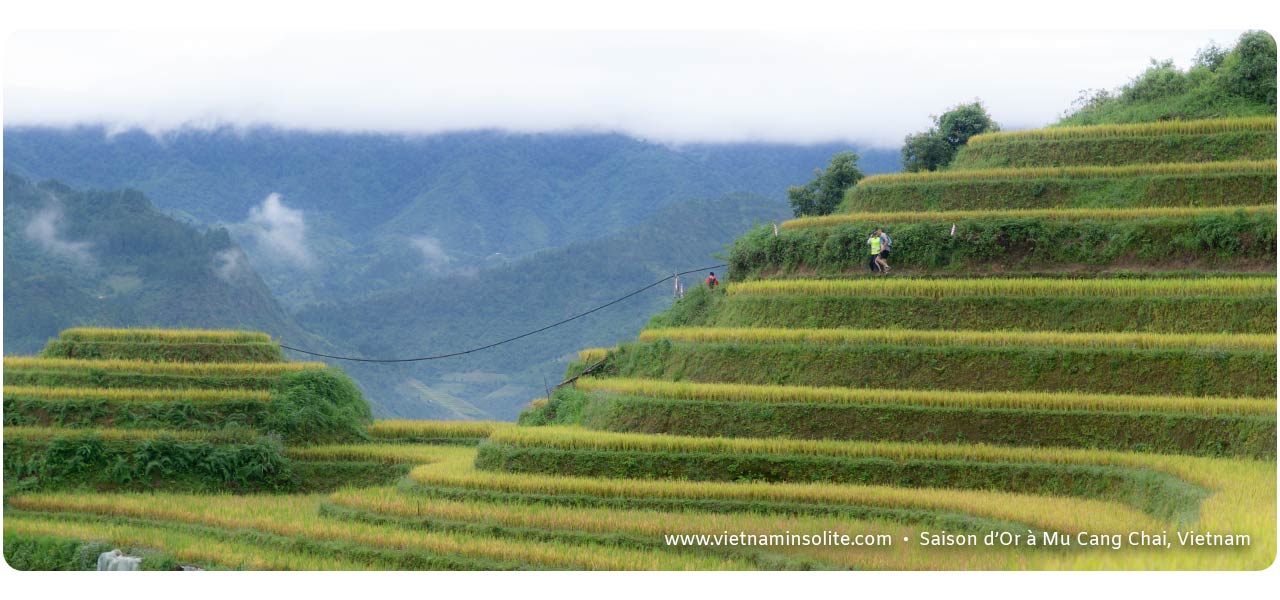
- The Very Popular Sapa Region
Elected by some media outlets as one of the most beautiful rice terraces in the world, Sapa is undoubtedly the most well-known site to foreigners. And yes, several million tourists visit it each year. Sapa invites you to some magnificent hikes guided by the terrace sculptors themselves – the Hmong and Dao people here – on the trails of its most beautiful treasures: the Muong Hoa Valley, Ta Phin Village, Lao Chai Village… Beyond its aesthetic charms, this destination has other advantages: easy access and accommodations adapted to the tourist influx. Understand that the experience has been adapted to tourist economic activity. If you are looking for pure authenticity, consider the other places presented.
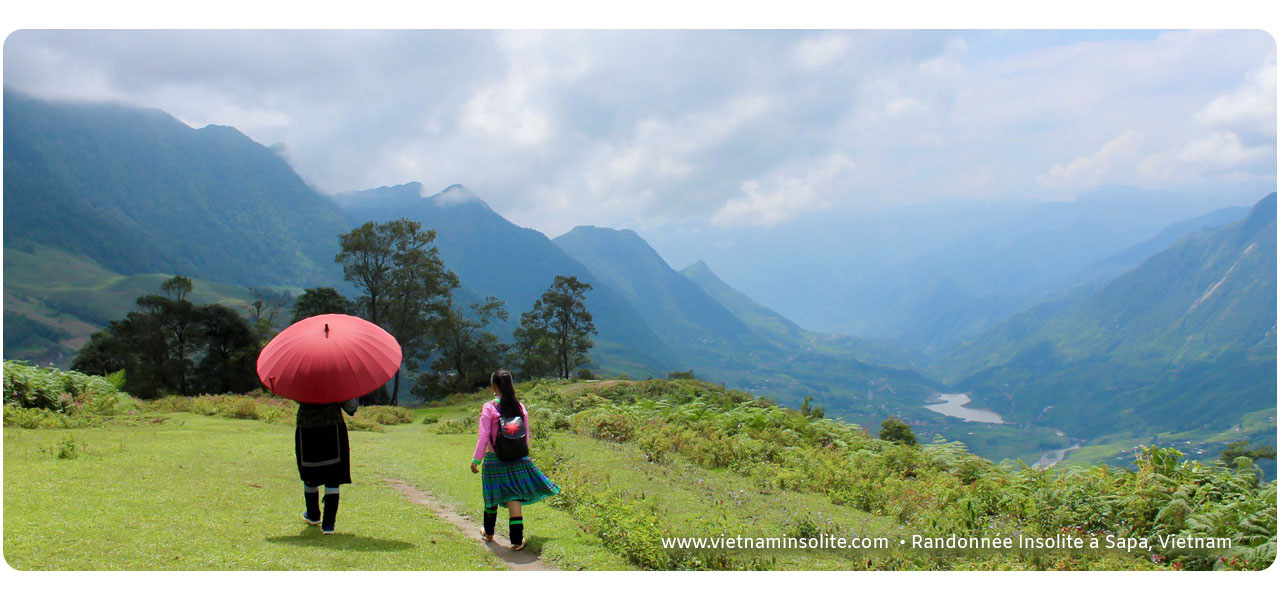
2.5) Ta Cu Ty in the Bac Ha District
Making a top 5 of Northern Vietnam is an impossible mission. Let us deviate from the rule to make a stop between Sapa and Hoang Su Phi on the slopes of the most beautiful rice terraces in the country. It's said! Located in the Bac Ha district, the mountainous and rice-growing panoramas of Ta Cu Ty are simply magnificent. In short, discreet paths, more authentic encounters.
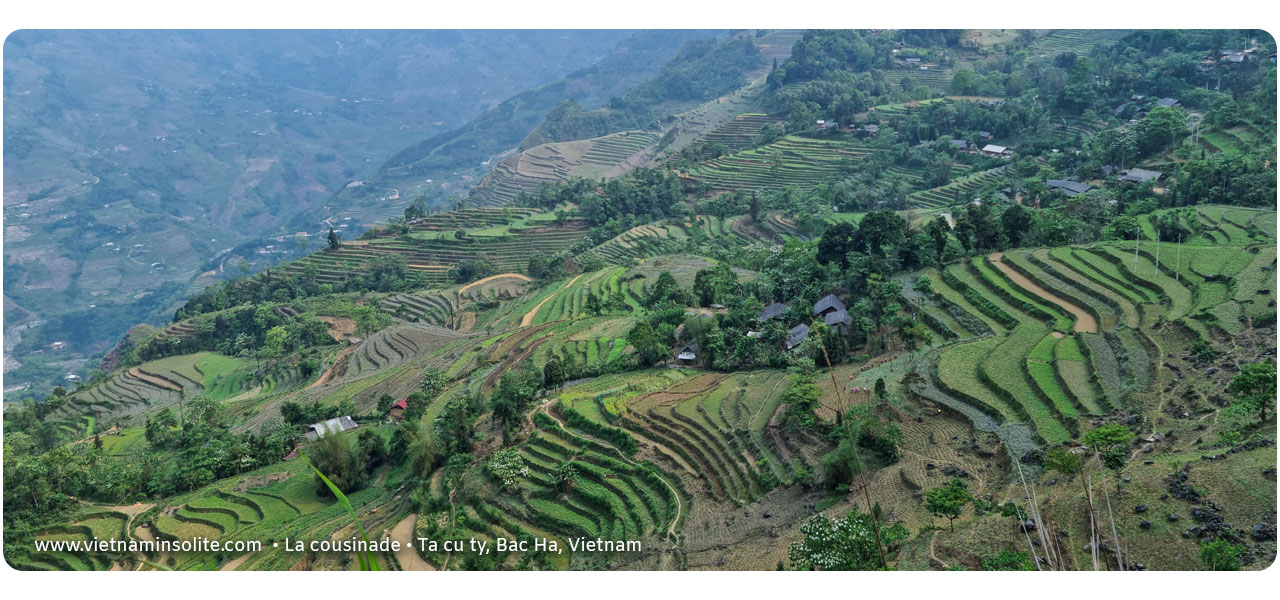
- The Grandeur of Hoang Su Phi
A land for hiking enthusiasts, Hoang Su Phi awaits you at the foot of the Tay Con Linh mountain in Ha Giang province. To discover this magnificent region, we advise you to take its numerous dirt paths, sometimes unpaved, and cross its large bamboo forests in the company of your hosts and guides, the Dao, Nung, or Chi people.
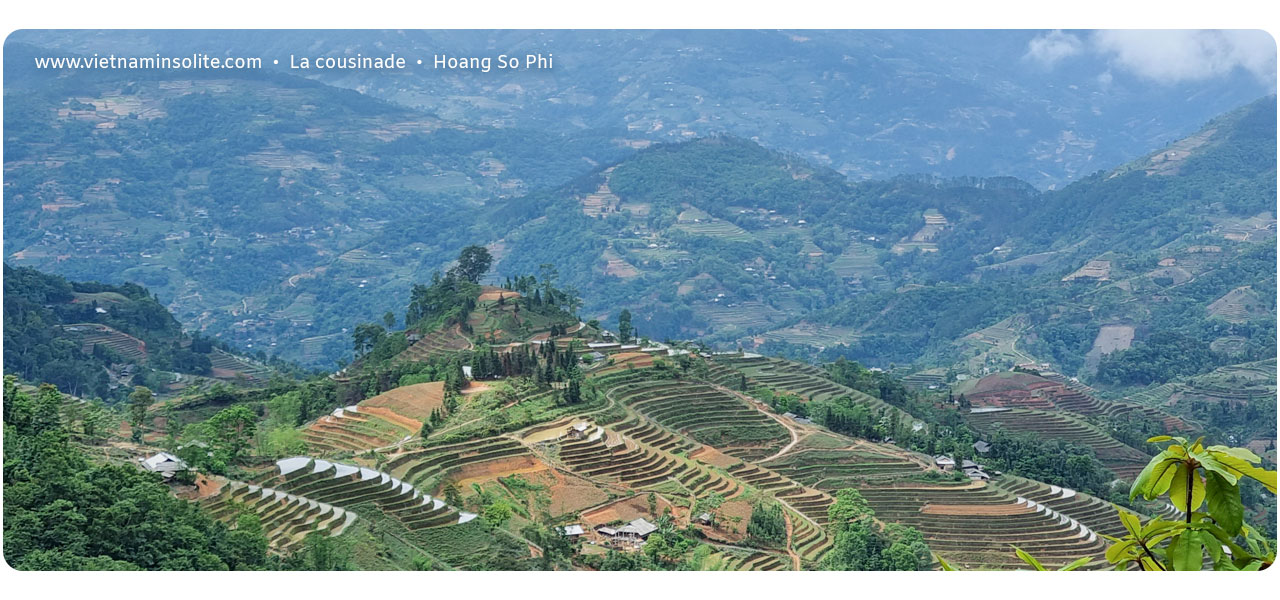
- The Sweetness of Hong Thai
Blessed with a cool climate, off the beaten track, and the work of a phoenix (if the legend is to be believed… and we do), the mountains of Hong Thai shelter the most beautiful rice terraces in the Tuyen Quang region. The capital of the Dao people, this destination invites you not only to beauty and the imaginary (ref. Phoenix) but also to encounters. Indeed, traveling its roads involves discovering its villages, sharing meals with its inhabitants, and even sleeping not with them but in their homes: Khau Trang, Pac Khoang, Nam Mu.
- The Phu Luong Nature Reserve
The magnificent Phu Luong Nature Reserve showcases spectacular and wild landscapes. Still spared by mass tourism, Phu Luong is ideal for all backpackers and travelers who wish to escape the Hanoian urban hustle and bustle, just a three-hour drive away. With some 17,000 hectares of lush greenery rich in preserved tropical flora and fauna, imagine the quality of the hikes but also the encounters with the locals – the Thai and Muong people.
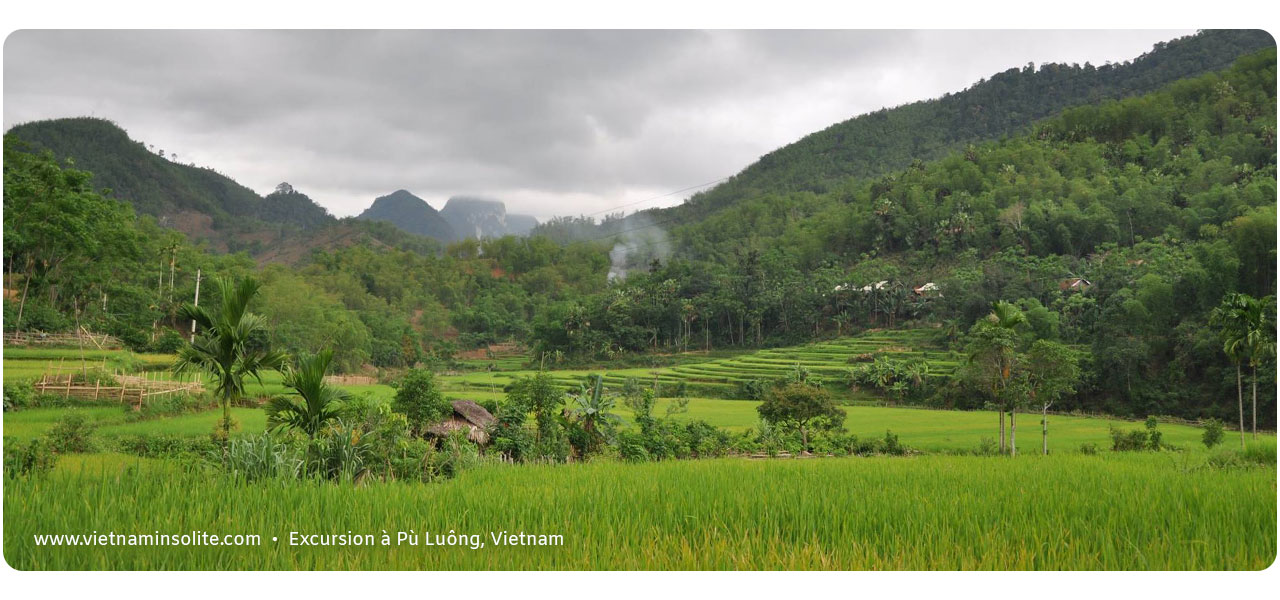
- Magnificent Rice Terraces at Ban Gioc Waterfall and Trung Khanh, Cao Bang
Cao Bang is famous for the Ban Gioc Waterfall, the most impressive in Vietnam, one of Cao Bang's must-see tourist destinations. Autumn is even more beautiful when the rice paddies bordering the waterfall are adorned with a brilliant yellow, blending with the gentle Quay Son River and the majestic mountains, thus creating a natural masterpiece.

- Beautiful Rice Terraces in Pu Luong
Pu Luong is located right next to the Mai Chau Valley but belongs to Thanh Hoa province. The typical landscape of Pu Luong consists of tropical forests on high limestone mountains and peaceful rural villages inhabited by local ethnic minorities. These have lived here for generations, leveling hills and mountains to create terraced crops, drawing water from low-altitude streams to supply the fields. Many water wheels have been installed in the region for agriculture and daily activities.

- Rice Terraces of Tam Coc, Ninh Binh
What makes Tam Coc an iconic tourist destination in Ninh Binh are the rice fields between the Ngo Dong River and the limestone cliffs, which can be admired by boat to Tam Coc or from the top of Ngoa Long Mountain when visiting Mua Cave. Due to a limited water supply, Tam Coc only produces one rice crop, sown in January and harvested in May. The golden rice fields of Tam Coc are expected at the end of May each year. An annual festival is organized to celebrate this event and promote the beauty of Ninh Binh, thus attracting more tourists.

- Rice Terraces of Thai Binh
Located about 110 km from Hanoi, Thai Binh is a province without mountains, crossed only by rivers and vast plains. Its rice fields, therefore, possess a unique beauty, different from those of the highlands of Hoang Su Phi (Ha Giang) or Mu Cang Chai (Yen Bai). Here, the rice fields are arranged in a square and well-aligned manner, as if drawn with a ruler, unlike the terraced fields of the mountainous provinces. Seen from above, this place looks like a giant carpet alternating dark, light, green, and yellow squares. Every October, visitors can admire the splendor of the golden season and create magnificent poetic films and photos.

When is the best time to visit Northern Vietnam?
It’s the north, but with temperatures that can rise up to 40 degrees Celsius. To avoid extreme heat or cold, two periods are ideal for visiting the rice terraces in Vietnam: between September and November, and from mid-March to June.

September to November
The period between September and November offers the most beautiful landscapes of the year in northern Vietnam and marks the end of the monsoon season. The autumn colors enhance the terraces, where green, yellow, and orange blend together. In short, pleasant temperatures and exceptional hiking.
Mid-March to June
In March and June, the climate is mild, neither too hot nor too cold, and rainfall is rare. While the rice terraces are less vibrant than in autumn, they are still stunning, especially when the morning mist settles over your unmarked trails.
July to August
The summer months bring the monsoon season, with heavy rains and high temperatures. From experience, it is possible to hike, even in difficult conditions, during these months. Sure, the humidity, leeches, and wet shoes add some spice, but if summer is your only option, don’t miss the chance to climb the stairs to the sky!
December to February
Winter is undoubtedly the least favorable time for a beautiful escape to the mountains of northern Vietnam. It’s cold, dull, and foggy. More seriously, the rice terraces are fallow during this period.
By Foot, Car, or Motorbike?
While the five sites presented here are exceptional, the goal isn’t to rush through them, as that might result in a tightly packed itinerary. There are many ways and paths to explore northern Vietnam. For the paths, choose the sites that best meet your expectations (thank you!). For example, in Sapa, you’ll find very comfortable hotels or homestays, while in Hoang Su Phi, you can opt for more rustic accommodations. Finally, think about your northern adventure without overlooking other exceptional sites: Cao Bang, Meo Vac, Ba Be, Ninh Binh... The mileage can quickly add up!
As for the means of transportation, a subtle mix of the three methods mentioned in the title can be a good option. One of the first trips we organized when the borders opened in April was a one-month loop between motorbike and hiking across the whole northern region – the photos you’ve seen are souvenirs from that trip.
If you have any questions or would like us to organize your trip, please contact Vietnam Insolite !
Leave a comment and let’s chat :)






